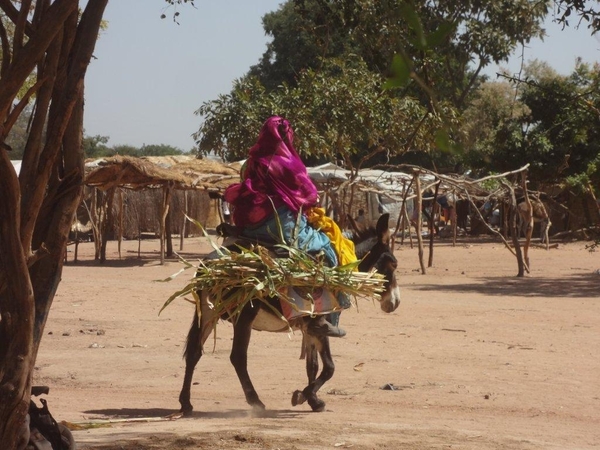
By Alex Neve, Secretary General, Amnesty International Canada
Fighting is raging between various ethnic groups on the Darfur side of the border of the Chad/Sudan border, particularly between two Arab tribes, the Salamat and Misseriya, who have been allies in the past. More villages are being attacked and left in ruins. That means more people killed and injured. It also means more women and girls being raped, though it is as of yet impossible to get a clear read on how widespread that has become. Homes and businesses are being set on fire and destroyed. Looting and theft, of livestock and personal property, is pervasive.
And tens of thousands of people are on the move. More than 30,000 have left Darfur and crossed over into Chad as refugees since the beginning of the year, the highest number to flee in years. Some have settled in refugee camps, others remain dispersed near the border.
More than 30,000 have left Darfur and crossed over into Chad as refugees since the beginning of the year, the highest number to flee in years.
Meanwhile, relations between Chad and Sudan – which have been amicable since 2010 after years of belligerence, cross-border clashes, and support for armed opposition groups – appear to be increasingly strained because the current violence is so close to their shared border. Chad fears that the fighting might again spill over into its territory, as it has in the past. Sudan assumes that armed groups carrying out attacks in Sudan may use refugee camps in Chad for shelter. If the two countries return to warmongering and finger-pointing, that will almost certainly not make things any easier for Darfuris displaced on either side of the border.
No wonder that a young man I spoke with in the Abgadam Refugee Camp, not far from the volatile conflux of the borders of Chad, Sudan and the Central African Republic (CAR), told me that it always feels like “something could explode at any moment.” One more cattle raid. One more village attacked. One more wave of refugees. A further turn for the worse in CAR. And this region could explode.

Yet the world does not seem to be paying close attention. In the same camp, meeting with a group of Sheikhs representing the Masalit community, our Amnesty delegation was thanked profusely for coming. They told us they are very grateful for all that the international community is doing to provide them with food and water. But they asked us if the rest of the world knows how quickly things are “changing for the worse” in Darfur?
Last Thursday, Nov. 14, as we prepared to leave the area surrounding Abgadam Camp, fighting along the border intensified again. Reports came in of several people killed, and people on the Chadian side of the border described seeing villages in Darfur engulfed in smoke. It felt as if everyone – refugees, humanitarian workers, UN officials and Chadian authorities – was collectively holding their breath.
Rumors swirl. Will there be further counter-attacks? Are more refugees coming? What of the thousands of refugees living in the brush, most of them Misseriya, around Abgadam Camp, with its largely Salamat inhabitants?
And there is increasing talk of possibly relocating refugees to a new camp further away from the border. It would be an understatement to say that Abgadam is located in a very volatile area. At the same time, it is where the refugees want to be. They have close ties with the Chadian population in this area and feel that they are close enough to go back home as soon as it becomes safe to do so. When we have asked refugees at Abgadam what they thought of the possibility that they might be transferred to a new site several hundred kilometers further inside Chad, we hear nothing but defiance.
One elderly man told me: “I’m too old to be moved to a place where we have no friends. I won’t go. I’d rather go back and die in Darfur or even die right here.”
No decisions about relocation have been made, but the rumors themselves have most definitely become a source of considerable agitation.

Many times over the course of this mission, I have found myself remembering the women, men and young people I’ve encountered in recent missions not that far from here, along the South Sudan/Sudan border, investigating human rights abuses in Sudan’s Southern Kordofan State.
During interviews in April 2012 in the sprawling Yida Refugee Camp in South Sudan’s Unity State, very close to the Sudanese border, or in January 2013 as we traveled through villages that have been bombed in Southern Kordofan, the themes that emerged and the questions we were asked were so similar to what we are hearing now in Chad. “When will this end?” “Does the world know what is happening?” “Why do they want to move us from this refugee camp? We won’t go.” “Please make the Sudanese government stop violating our rights.”
Two different conflicts, two different borders, two different countries sheltering refugees. But behind the myriad human rights abuses, one nation – Sudan. It is time for concerted and unified global action to end human rights abuses in Sudan – everywhere in Sudan. We can’t keep waiting for things to explode, again and again. Renewed and determined efforts to protect human rights throughout Sudan must become a priority for world leaders, particularly within the U.N. Security Council and the African Union.
